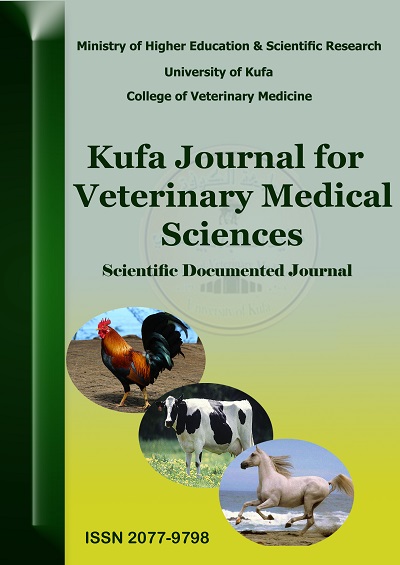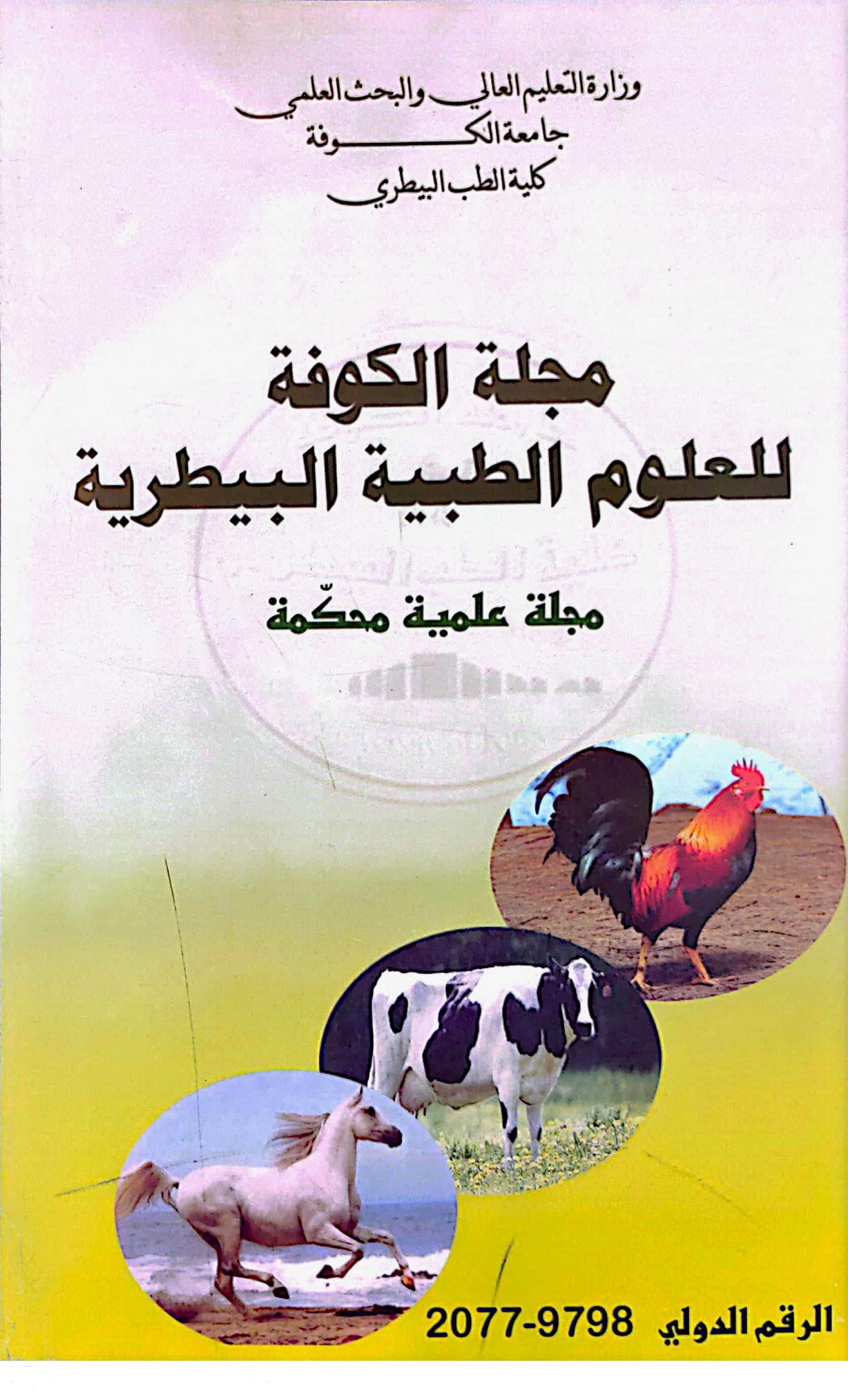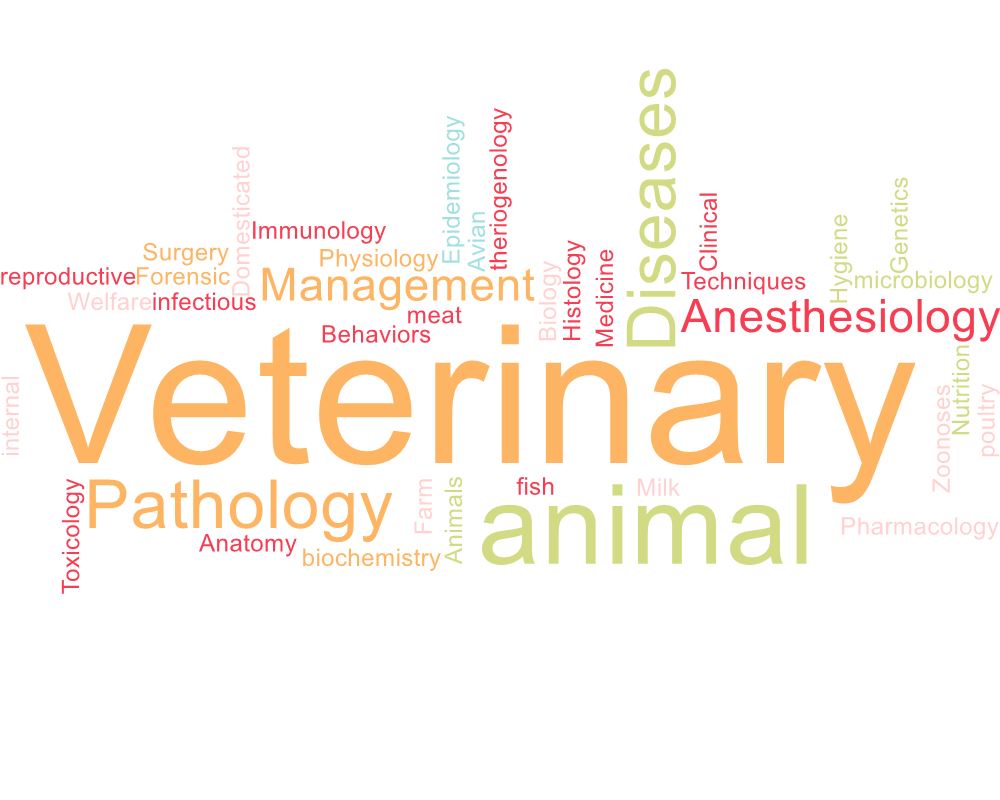Publication Ethics
Ethics of publishing in the Kufa Journal for Veterinary Medical Sciences
Publication Ethics Statement:
This Publication Ethics and Publication Malpractice Statement is prepared based on COPE's Best Practice Guidelines for Journal Editors. For more information on this issue, please visit http://publicationethics.org
Ethical guidelines for journal publication:
The publication of an article in this peer-reviewed journal is the process of permanent knowledge improvement. It is a direct reflection of the quality of the work of the authors and the institutions that support them. Peer-reviewed articles support and embody the scientific method. It is therefore important to agree upon standards of expected ethical behavior for all parties involved in the act of publishing: the author, the journal editor, the peer reviewer, the publisher, and the society of society-owned or sponsored journals.
Responsibilities of Publishers:
Kufa Journal for Veterinary Medical Sciences is committed to the following points: The decisions taken by the editorial board regarding scientific research are final. Adopting the professional evaluation of the research submitted for publication away from personal or commercial interests. Maintaining the integrity of academic and research files. Ethical standards for publication by the journal staff represented by the editor-in-chief, assistant editors, members of the editorial board, reviewers, and authors. Checking the problems of plagiarism, scientific theft, and fraudulent data included in the research submitted for publication. Publishing corrections, clarifications, and retractions that include publications when needed.
Responsibilities of Editors:
Kufa Journal for Veterinary Medical Sciences has ultimate responsibility for deciding if a manuscript submitted to it should be published, and in doing so is guided by the journal's policies as determined by the Journal editorial board and constrained by such legal requirements as shall then be in force regarding libel, copyright infringement, and plagiarism.
The Editor may consult with the Associate Editor and other members of the editorial team, as well as with reviewers, regarding the research submitted for publication, by accepting or rejecting the research.
An editor should evaluate manuscripts for their intellectual content without regard to race, gender, sexual orientation, religious belief, ethnic origin, citizenship, or political philosophy of the authors.
Maintain academic integrity and meet the needs of readers and authors. Publication of corrections, clarifications, and retractions. Possess the maximum intellectual content only.
The editor and any editorial staff must not disclose any information about a submitted manuscript to anyone other than the corresponding author, reviewers, potential reviewers, other editorial advisers, and the publisher, as appropriate.
Not to use unpublished material that has been disclosed in the research submitted by the editor or members of the editorial board for their own research purposes without the express written consent of the author.
Responsibility for the Reviewers:
Judgments should be objective. Reviewers should have no conflict of interest with respect to the research, the authors and/or the research funders. Reviewers should point out relevant published work which is not yet cited. Reviewed articles should be treated confidentially. Reviewers should advise editors, but the final decision on an article is made by the Editor-in-Chief. Reviewers should provide constructive comments to improve the quality of the article. Dealing confidentially with the research received for review, and not using the information in the reviewed research to achieve personal goals and interests. The comments provided by the evaluators on the research should be in a technical, professional and objective manner.
Responsibilities of Authors:
Authors should actively participate in the peer review process and provide suitable responses to the comments raised by peer reviewers on time.
All authors must have significantly contributed to the research and fulfil the authorship criteria, and must state that all data in the article are real and authentic.
All authors are obliged to provide retractions or corrections of mistakes.
Copyright: If a manuscript contains any previous published image or text, it is the responsibility of the author to obtain authorization from copyright holders.
The research must be submitted in English only and must be written in accordance with proper grammar and appropriate terminology, must be submitted on the basis that it has not been published elsewhere, and is not currently under study by another journal you publish or any other publisher.
The authors allow editing the research in a form that is easy to read, and are asked to clearly identify who provided financial support to conduct the research and/or preparation of the manuscript and briefly describe the role of the institution/sponsor in what part of the work.
Authors of manuscripts reporting on original research should present an accurate account of the work performed, accompanied by an objective discussion of its significance. Underlying data should be represented accurately in the manuscript. The manuscript should contain sufficient detail and references to permit others to replicate the work.
Under an open access license, the authors retain ownership of the copyrights to their content, and anyone is allowed to download, reuse, reprint, modify, distribute and/or copy the content as long as the original authors and source are properly stated.
When the author(s) discover a significant error or inaccuracy in his published work, it is the author's duty to immediately notify the journal editor or publisher to withdraw or correct the research.
All authors should ensure that all authors have read the final checklist for submission before submitting it to the Kufa Journal of Veterinary Medical Sciences.
Publication decisions
The editor should be responsible for deciding which of the articles submitted to the journal should be published. The validation of the work in question and its importance to researchers and readers must always drive such decisions. The editor may be guided by the policies of the journal's editorial board and constrained by such legal requirements, copyright infringement and plagiarism. The editor may confer with other editors or reviewers in making this decision.
Peer review process
All of a journal’s content should be subjected to peer-review. Articles submitted for possible publication are subjected to a double-blind, peer review process. Articles are first reviewed by editors. The editor may reject it out of hand either because it is not dealing with the subject matter for that journal or because it is manifestly of a low quality so that it cannot be considered at all. Articles that are found suitable for review are then sent to at least two experts in the field of the paper. Referees of a paper are unknown to each other. Referees are asked to classify the paper as publishable immediately, publishable with amendments and improvements, or not publishable. Referees’ evaluations usually include an explicit recommendation of what to do with the manuscript. Referees’ comments are then seen by the author.
Editors should be ready to justify any important deviation from the described process. Editors should not reverse decisions on publication unless serious problems are identified.
Editors should publish guidance to either authors or reviewers on everything that is expected of them. This guidance should be regularly updated and will refer or link this code.
Violation of Publication Ethics:
- Plagiarism: Use of verbatim texts from other sources without acknowledgment is prohibited. The content of all articles must be the original work of authors and must not be plagiarized from other articles. COPE’s flowcharts and guidelines are approached in cases in which plagiarism is detected.
- Data: falsification/fabrication: Falsification is the practice of omitting or altering research materials, data, or processes so that the results of the research are no longer accurately reflected. Fabrication is the practice of inventing data or results and reporting them in the research. Both of these misconducts are fraudulent and seriously alter the integrity of research. Therefore, articles must be written based on original data and the use of falsified or fabricated data is strongly prohibited.
- Image manipulation: The KVJS encourages authors to send their original images. All digital images in manuscripts accepted for publication will be checked for inappropriate manipulation. No specific feature within an image may be enhanced, obscured, moved, removed, or introduced. Adjustments of brightness, contrast, or color balance are acceptable as long as they are applied to the entire image and do not misrepresent any information present in the original, including the background. The editors will request the original data from the authors to compare the manipulated figures in cases suspected of inappropriate manipulation.
- Simultaneous Submission: Simultaneous submission occurs when a manuscript (or substantial sections from a manuscript) is submitted to a journal when it is already under consideration by another journal.
- Redundant Publications: Redundant publications involve the inappropriate division of study outcomes into several articles, most often consequent to the desire to plump academic vitae.
Sanctions:
If there are documented violations of any of the above-mentioned policies in any journal, regardless of whether or not the violations occurred in a journal, the following sanctions will be applied: (i) Immediate rejection of the infringing manuscript, (ii) Immediate rejection of every other manuscript submitted to any journal published by any of the authors of the infringing manuscript, (iii) Prohibition will be imposed for a minimum of 36 months against all of the authors for any new submissions to any journal, either individually or in combination with other authors of the infringing manuscript, and (iv) Prohibition against all of the authors from serving on the Editorial Board of any journal.
Principles of Transparency
Peer review process: KJVS is a double-blind peer-reviewed electronic and print biannual publication concerned with all aspects of veterinary sciences. This process, as well as any policies related to the journal’s peer review procedures, is clearly described on the journal’s Web site guidelines for authers
Governing Body: KJVS has a solid editorial board whose members are recognized experts in the subject areas included within the journal’s scope. The full names and affiliations of the journal’s editors are provided on the journal’s Web site at Editorail Board.
Contact information: Journal is provided the contact information for the editorial office of KJVS at contact us .
Identification of and dealing with allegations of research misconduct: Editor-in-Chief takes reasonable steps to identify and prevent the publication of papers where research misconduct has occurred, including plagiarism, citation manipulation, and data falsification/fabrication, among others.
Publishing schedule: The periodicity at which a journal publishes is clearly indicated at Home .
Archiving: A journal’s plan for electronic backup and preservation of access to the journal content is clearly indicated at archive.
Author fees
The Journal database is fully open access. Full text of published articles is available for everyone who can access the Journal website free of cost. Besides, the authors should pay the article publication fee, which is 100 000 Iraqi dinar.












